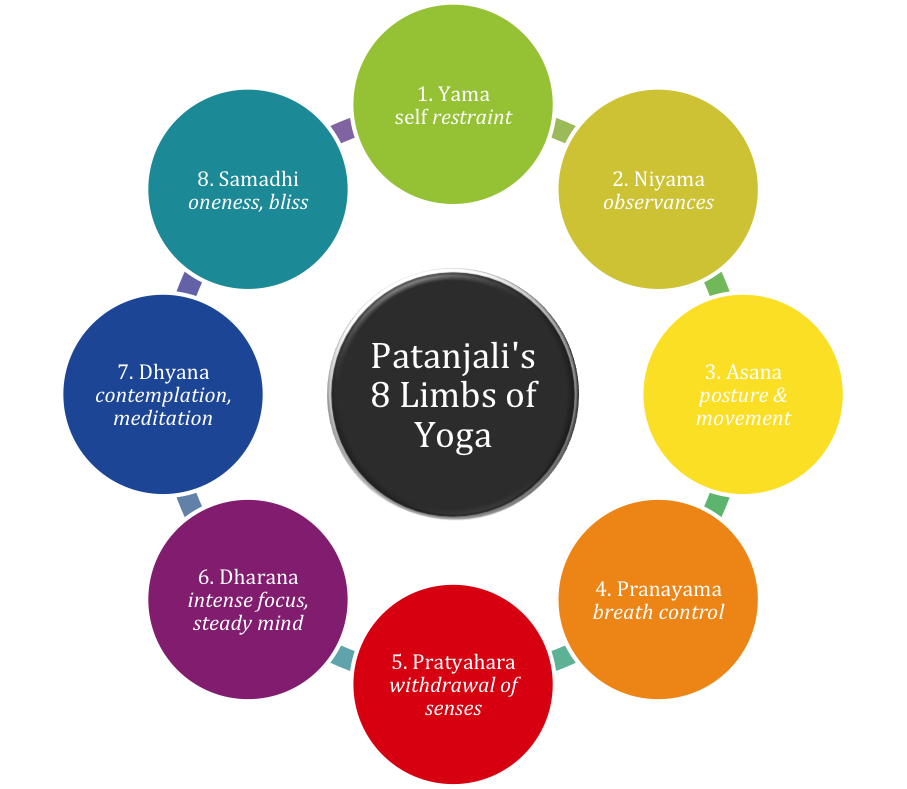8 limbs of Yoga
Yoga is about transforming and benefitting every aspect of our lives and not just the hour or so on the mat once a week! Yoga, in our Western culture, has over time become known as a method of exercise.
But what is the Goal of Yoga, Really?
The word “yoga” means union. In the context of the practice of Yoga, it is union with the Divine, the Universe, the union with God (if you prefer that word).
The traditional Eightfold Path of Yoga, as taught through the Yoga Sutras of Patanjali, is a step-by-step method of achieving such an experience.
If we can grow to be kind and honest and learn to use our energy in a way that is worthwhile to ourselves and others, we will not only help ourselves but all those who come into contact with us as well.
In Patanjali's Yoga Sutra, the eightfold path is called ashtanga, which literally means "eight limbs" (ashta=eight, anga=limb). These eight steps basically act as guidelines on how to live a meaningful and purposeful life. They serve as a prescription for moral and ethical conduct and self-discipline; they direct attention toward one's health; and they help us to acknowledge the spiritual aspects of our nature.
If you've been practicing yoga for a while, you're probaly familiar with asana, pranayama, and meditation. But you might not know much about the first two steps of the path: the five yamas and five niyamas. These are the ethical precepts, or core values, of yoga as well as its starting place—meant to be practiced before you do your very first Sun Salutation. They provide a recipe for living in the world with ease but they are not easy.
In the next news items we will shed some more light on the 8 steps of this Yoga path, starting with explaining the yama's and niyama's.

